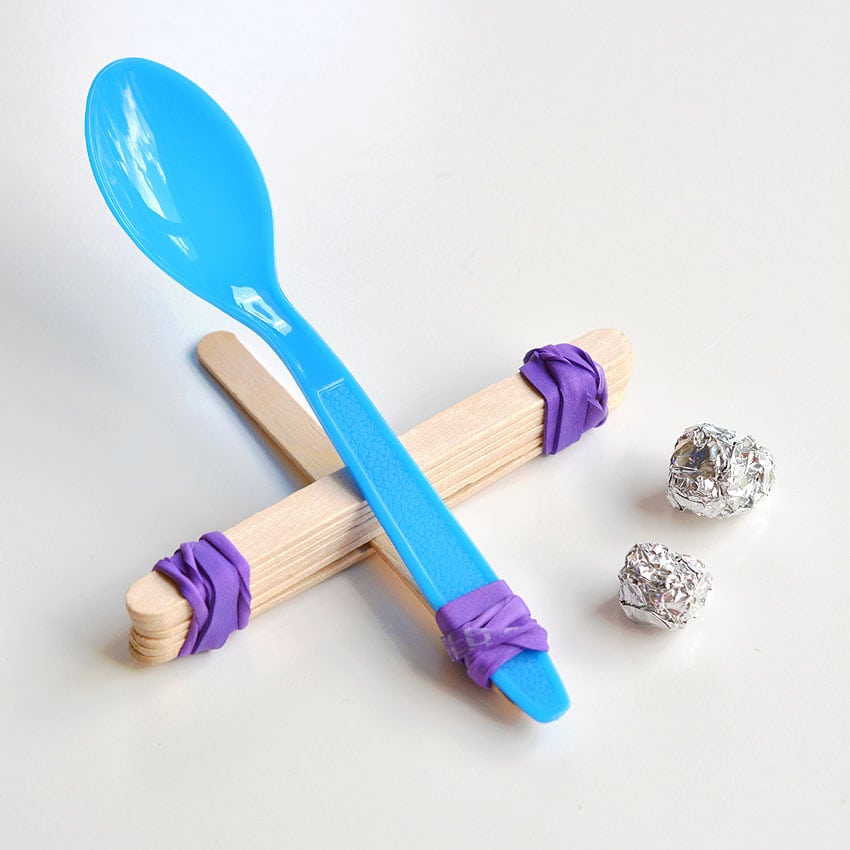Embark on a Crafty Adventure: Building a Catapult with Popsicle Sticks!
Hey there, super parents! Are you on the hunt for an exciting and educational activity to share with your little engineers at home? Well, you’ve struck gold! In this delightful guide, we’ll walk through the steps to construct a mini catapult out of popsicle sticks. It’s not just an opportunity for loads of fun; it’s a fantastic way to dive into the principles of physics, practice fine motor skills, and bond with your kids over a hands-on project. So, gather your popsicle sticks, and let’s get catapulting!
Why Popsicle Stick Catapults?
Before we launch into building, let’s chat about why catapults made of popsicle sticks are a smashing (literally and figuratively) idea for you and your family. First off, they are super easy and inexpensive to make. You probably already have most of the materials right at home. Plus, this activity is remarkably versatile— suitable for a wide range of ages and can be customized to challenge older kids or simplified for younger ones. Best of all, it nurtures creativity, problem-solving, and an understanding of scientific concepts like energy, force, and motion.
Materials You’ll Need
- Popsicle sticks (about 10-15 per catapult)
- Rubber bands (a handful of various sizes)
- A spoon or a small cap (like a milk jug cap) to hold your projectiles
- Small, soft projectiles (like mini marshmallows or pom-poms)
Pro Tip: You can find popsicle sticks at your local craft store or save them from your summertime treats (just make sure they’re clean). For the rubber bands, various sizes allow for different tension adjustments, which can be a great experiment in control and distance of your catapult’s launch.
Getting Started: Building the Base
The base of your catapult will be the foundation for your mini medieval machinery. Here’s a step-by-step guide to getting it right:
- Take 5-7 popsicle sticks and stack them together. Wrap a rubber band tightly around each end of the stack to secure them. This will form the base of your catapult.
- Next, create a fulcrum by stacking two popsicle sticks together and binding them at one end with a rubber band. Make sure the non-bound ends are free to move.
- Now it’s time to join the base and the fulcrum. Separate the two popsicle sticks in the fulcrum just enough to slide the stack from step 1 between them. Slide the base to the bound end of the fulcrum, creating a T-shape when viewed from the side.
- Secure the intersecting sections with rubber bands. This should be done tightly enough to keep the base in place while allowing the top lever of the fulcrum to move freely up and down.
Your catapult’s structure is starting to take shape, and soon it will be time to add the launching mechanism to watch your projectiles soar. Isn’t it just thrilling?
Adding the Launcher
To turn your creation from a simple stack of sticks to a fully functioning catapult, you’ll need to add a bucket or dish to hold your projectiles. Let’s get that spoon or cap attached:
- If using a spoon, lay it flat against the top lever of the fulcrum (the single stick that moves up and down). Use a rubber band to secure it to the end.
- Alternatively, if using a bottle cap, glue it on the edge of the top lever, allowing it to dry thoroughly before you begin launching.
- For added stability and precision, you can use additional rubber bands to tighten the spoon or cap, ensuring it doesn’t wobble when moved.
Congratulations! You’ve just constructed your very own popsicle stick catapult. The journey doesn’t end here, though. It’s time to get those mini marshmallows or pom-poms and start the ultimate test – firing!
Are you ready to see your craft take flight? Stay tuned, as we’ll dive into the launching techniques, safety tips, and fun games you can play with your newly minted catapult. Trust me, your kids will be so engaged, they won’t even realize they’re learning – it’s a win for fun and a win for education!
And remember, crafting with your kids is not about perfection; it’s about spending quality time together, laughing at the “oops” moments, and cherishing the triumphs of a project well-done. So, let loose, have fun, and get ready to watch your homemade catapults send those projectiles into the air. The sky’s the limit!

5 Things Parents Should Know When Preparing for a Popsicle Stick Catapult
- Safety First: While constructing and playing with this catapult is generally safe, it’s important to always supervise your children, especially when working with younger ones. Make sure the area you’re working in is clear of any sharp objects, and the projectiles you choose (like marshmallows or pom-poms) are soft and light-weight to prevent any injuries during launch.
- Creative Customization: Get your kids excited by allowing them to personalize their catapults. They can paint or color the popsicle sticks, glue on some glitter, or add stickers to make their catapult truly unique. This not only adds an artistic element to the project but also encourages children to take ownership and pride in their creations.
- Experimentation is Key: Your catapult can act as an educational tool to teach simple physics. Have your kids try out different configurations of rubber bands and popsicle sticks to see how it affects their catapult’s performance. You can even turn it into a friendly competition to see whose catapult launches the furthest or the most accurately.
- Embrace the Mess: Crafting can get a bit chaotic, but that’s all part of the fun. Set up a designated craft area where it’s okay for glue, paint, or pom-poms to fly. Cleanup becomes much easier when you’re prepared for the mess, and it allows your children to get creative without worrying about making a mess.
- Encourage Questions: This DIY activity is a perfect time to explore your child’s curiosity. Encourage them to ask questions about how the catapult works, why the lever launches the marshmallow, and how different angles affect the trajectory. This not only leads to a deeper understanding but also to an inquiring, scientific approach to fun challenges.
Launching Techniques and Safety Tips
With your catapult ready for action, learning the proper way to launch is just as important as building it. Guide your kids through the process of pulling down on the lever and releasing smoothly. If you’re using a spoon, place the projectile inside it; for a cap, set the projectile on top and gently tap the lever.
Launch Safety Tips:
- Always launch in an open space where there’s no risk of hitting people or fragile objects.
- Never use hard objects as projectiles. Stick with soft, lightweight materials.
- Do not aim the catapult at people or animals. Safety is always the top priority.
- Encourage children to take turns launching to avoid any chaos and to supervise closely at all times.
Engaging Games and Challenges
Now, let’s turn this educational craft into an engaging game! Try setting up various targets around the room and challenge your kids to hit them with their catapult. You can use stacked cups, pictures, or marked areas as targets. Each target can have different point values, turning it into a fun competition. You can also set up learning challenges by asking your children to predict the trajectory and range before they launch. This enhances their critical thinking and gets them engaged in hypothesizing and testing.
Constructing a catapult with popsicle sticks is much more than a simple craft. It’s an avenue for parent-child bonding, education, and good ol’ fashioned fun. Prepare to be amazed by how much enjoyment and learning can spring from a handful of popsicle sticks and rubber bands. Your children’s laughter and the memories you create together will be the best treasures from this adventure.
See more great Things to Do with Kids in New Zealand here. For more information see here
Disclaimer
The articles available via our website provide general information only and we strongly urge readers to exercise caution and conduct their own thorough research and fact-checking. The information presented should not be taken as absolute truth, and, to the maximum extent permitted by law, we will not be held liable for any inaccuracies or errors in the content. It is essential for individuals to independently verify and validate the information before making any decisions or taking any actions based on the articles.




